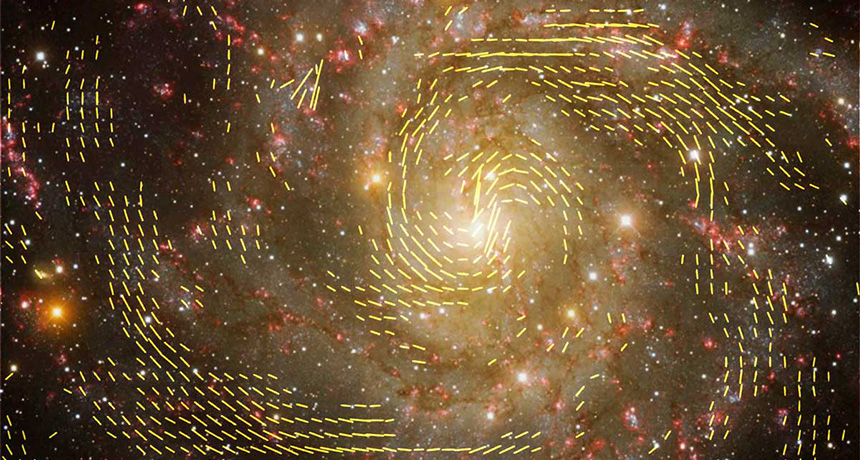Magnetic ‘glue’ helps shape galaxies
Map shows how patterns align, suggesting way to keep spiral arms stable

SPACE SWIRL Magnetic fields (yellow lines) closely match the spiral pattern of galaxy IC 342 (pictured), suggesting that magnetism might help hold the spiral arms together.
R. Beck/MPIfR, NRAO/AUI/NSF; U. Klein/AIfA (graphics); T.A. Rector/University of Alaska







